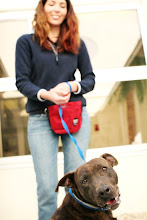"NO" is used to stop a dog from exhibiting a behavior that is undesirable. There is no need to yell NO at a dog, a firm tone will be suffice.
Only use NO once for each correction. If you say NO NO NO NO NO etc...the word will loose it's meaning. There must be consequence behind it. Therefore, if you say NO and your dog continues on with the undesirable action, you must intervene and stop the behavior yourself. Once the behavior has been stopped, remember to redirect your dog to a more appropriate action.
Remember, NEVER call your dog to you to discipline them! If you call your dog to you, and they come, you must now praise them for doing what you've asked. If you call your dog to you and then reprimand them for their previous actions, what do you think the chances are of them coming to you the next time you call them over? Slim to none, because all the dog understands is: When I come to them, they yell at me!
(Just a note, instead of using the word NO you can make a buzzer sound: EH EH!)
I mentioned above that you will want to refrain from saying No over and over again. Well the same rule applies to the dogs' name. Some people try and use a dogs' name as a command. Ex: Max! Max! Max! MAX!!! Question: What is it that you would like Max to do?! Whatever it is, please tell him so. Just think how annoying it would be to have some one shout your name repeatedly at you with no further instruction of what they wanted!
The only other correction command we should be using is OFF. (In other words, No means No, not quit, stop or any other word that might confuse you dog.) Off is different because it is descriptive. It lets the dog know exactly what behavior is the undesirable one. To train your dog not to jump, simply fold your arms, turn around, look away and say OFF every time your dog jumps.
Jumping is an attention seeking behavior, therefore ignoring it is the best medicine. Beware of giving negative attention to your dog such as pushing or kneeing them. Negative attention is still attention! (Remember that little kid who would act out in class, just to see his name written on the board?)
You may have to repeat this several times before your dog understands, but the second they have all four paws on the floor praise them lavishly. If they jump again, quickly remove your attention and repeat the Off command. Timing and consistency is important.
A couple correction pointers: Never hit your dog. This is unnecessary and many times will produce an undesired result. A simple lack of reward is generally suffice to convey your displeasure with a particular action.
Easy; easy is a reminder for the dog to be gentle or behave more calmly. Does your dog try and take your fingers off every time you offer them a treat? If so, then this modification command is for you! Simply place the treat in the flat palm of your hand and offer it to your dog while saying Easy. Your dog will automatically take the treat nicely, and you can praise them with: Good easy! Once your dog begins to grasp the meaning of this word, it can also be used during play time if your dog begins to play a bit too rough.
Always say this command in a calm and gentle tone.
Alright is used to signal that a given task is completed. Once your dog has complied with your direction and does not need to stay in position any longer, you may release them with "Alright!"
I most commonly use this word when working with the 'stay' command. Always say it in a definite and exited way. In the beginning you may have to encourage your dog to break position.
Now we have come to the easiest part. Praise! When it comes to praise words are not important but emotion is! Dogs know when you're fooling them, so be sincere. The more into it you get, the better the reinforcement.

Come back next time when we go over pointers for a positive training session!





No comments:
Post a Comment